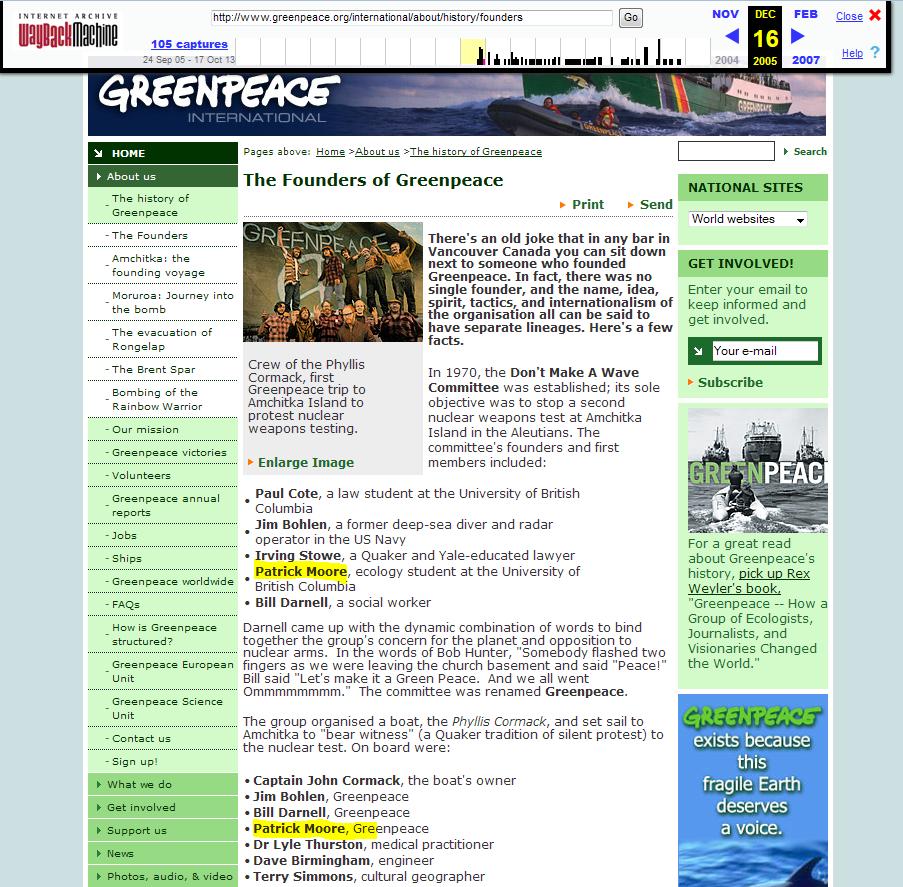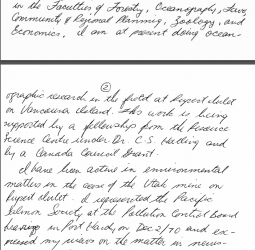Sunsettommy
Diamond Member
- Mar 19, 2018
- 14,942
- 12,573
- 2,400
Once again the lies about Dr. Moore flows heavily, when Greenpeace once again says he was never a founder:
Greenpeace Response to Patrick Moore Statements On Alexandria Ocasio-Cortez and the Green New Deal
March 4, 2019
EXCERPT:
“Patrick Moore was not a co-founder of Greenpeace. He does not represent Greenpeace. He is a paid lobbyist, not an independent source....."
They stated this lie just days ago, when in fact he was a founder... according to..... Greenpeace way back in 2002 (that is 17 years ago):

Yes that is from the WAYBACK Machine because the lying organization deleted this from their website sometime after 2005. Still listed that year with him in the founding groups photo:

He is in the photo second from the left.
He left Greenpeace in 1986.
Greenpeace Response to Patrick Moore Statements On Alexandria Ocasio-Cortez and the Green New Deal
March 4, 2019
EXCERPT:
“Patrick Moore was not a co-founder of Greenpeace. He does not represent Greenpeace. He is a paid lobbyist, not an independent source....."
They stated this lie just days ago, when in fact he was a founder... according to..... Greenpeace way back in 2002 (that is 17 years ago):

Yes that is from the WAYBACK Machine because the lying organization deleted this from their website sometime after 2005. Still listed that year with him in the founding groups photo:

He is in the photo second from the left.
He left Greenpeace in 1986.



